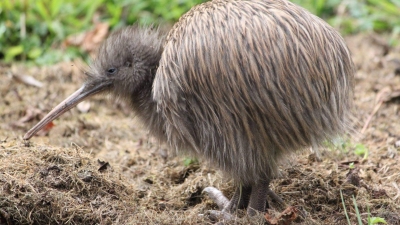
The name derives from the kiwi, a native flightless bird, which is a national symbol of New Zealand. Until the First World War, the kiwi represented the country and not the people; however, by 1917, New Zealanders were also being called “Kiwis”, supplanting other nicknames.
The kiwi has long had a special significance for the indigenous M?ori people, who used its skin to make feather cloaks for chiefs. The bird first came to European attention in 1811 when a skin ended up in the hands of a British Museum zoologist, George Shaw, who classified it as a type of penguin and portrayed it as standing upright. After early sightings by Europeans the kiwi was regarded as a curiosity; in 1835 the missionary William Yate described it as “the most remarkable and curious bird in New Zealand”.
In the early 1900s cartoonists began to use the kiwi as a representation of New Zealand. For example, in a 1904 New Zealand Free Lance cartoon a plucky kiwi is shown growing to a moa after a rugby victory of 9–3 over a British team. The next year, The Westminster Gazette printed a cartoon of a kiwi and a kangaroo (representing Australia) going off to a colonial conference. Trevor Lloyd, who worked for The New Zealand Herald, also used a kiwi to represent the All Blacks rugby team, but he more often drew a moa. Other symbols for New Zealand at this time included the silver fern, a small boy and a young lion cub. But until the First World War the kiwi was used as a symbol of the nation rather than the people of New Zealand.
Picture Credit : Google
